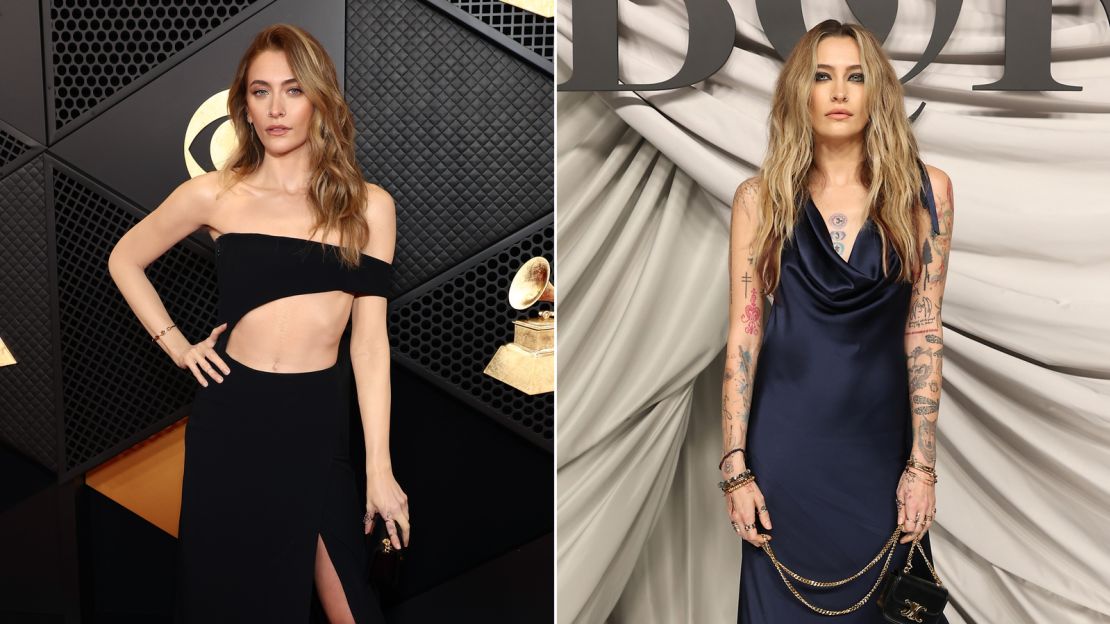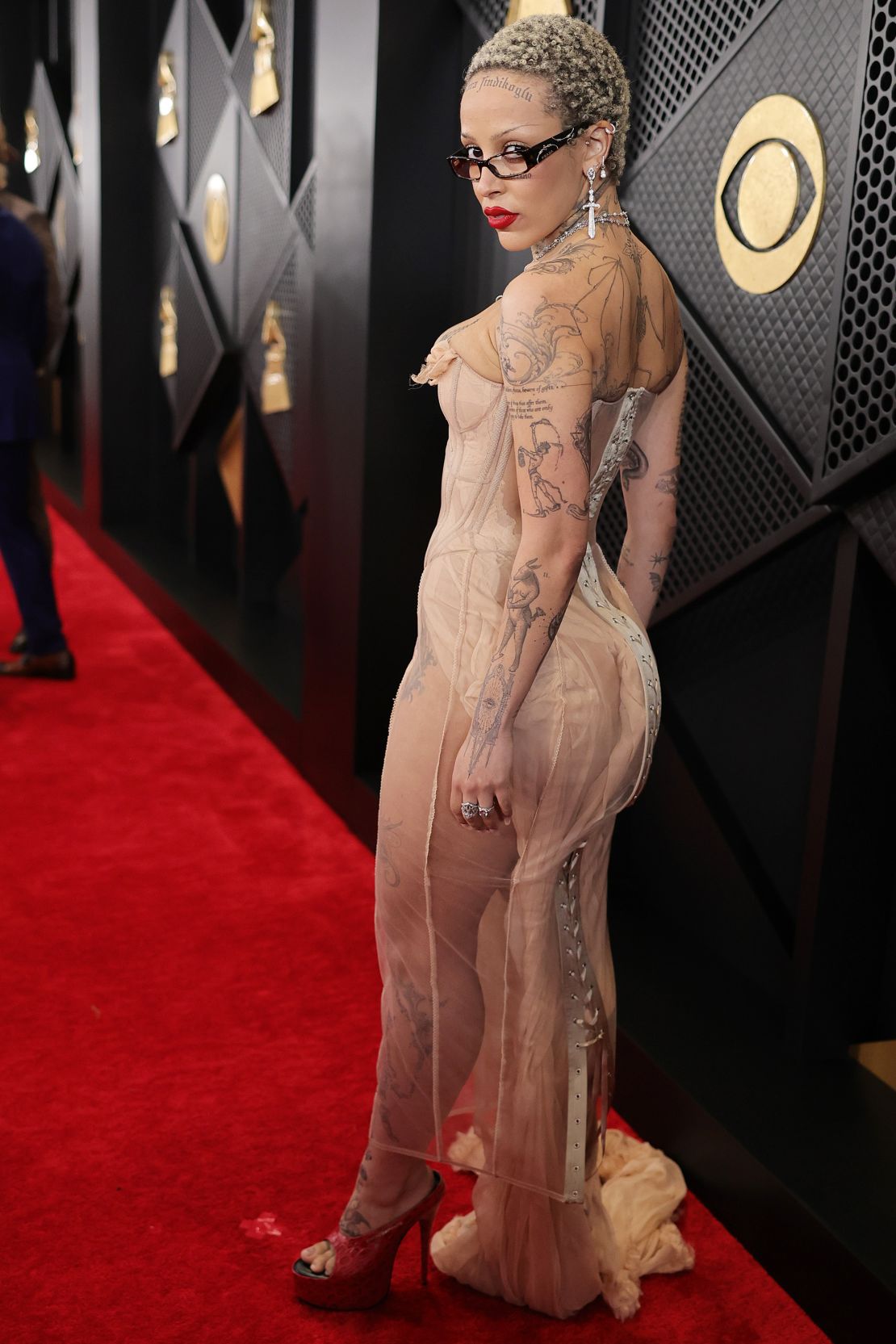Tattoos are for life. Unless you buy a heavy duty concealer, as demonstrated by 25-year-old Paris Jackson on Sunday.
The model and actor had all 80 of her tattoos expertly covered for the 66th annual Grammy awards, a process that only took her team of two makeup artists two hours in total. In a time lapse video posted to Instagram, Jackson’s skin is painted, brushed and sprayed a convincing ivory color. Out on the red carpet, her body — once a doodle-pad of colored ink and black lines — was a striking blank canvas, emphasized by a slinky, asymmetrical cut-out gown by Celine.
While Jackson’s transformation was a savvy collaboration with makeup brand CoverFx, temporary tattoo camouflage has snowballed as an essential celebrity makeup technique.
In South Korea, tattoos exist in a legal gray area — meaning K-Pop idols often avoid the social stigma by using bandages or makeup to hide any for broadcast performances. While shooting the Disney+ series “The Bear,” Jeremy Allen White required extensive tattoo coverage (and temporary tattoo re-application) that would withstand filming for hours in a hot kitchen. Similarly, for the 2022 film “My Policeman,” Harry Styles’ distinctive ink was airbrushed to oblivion — an undertaking that took two hours and required Styles to wear a gas mask in the makeup chair. “I’d look at myself with no tattoos and be like, ‘look at this boring *ss body,’” he told Teen Vogue.

But the ability to opt out of permanent body art, even just for one night, seems to appeal to some in the limelight. In 2014, Amber Rose made headlines when she attended the Grammys in a decidedly stripped-back look. She wore a gold, art-deco sequinned Naeem Khan gown, her two tattoo sleeves completely erased — their blankness accentuated by a sprinkling of body glitter.
On Saturday, Lana del Rey arrived at the pre-Grammy Gala with a couple of barely-there tatts seemingly peaking through a layer of makeup. Rey’s romantic black Vivienne Westwood dress perfectly framed her décolletage, as well as two faded collar bone script tattoos.
Elsewhere on the red carpet, while Rey and Jackson were disguising their ink, Doja Cat (who scooped three awards this season) went face-first into the world of — albeit temporary — tattoos. Her sheer, flesh-toned, corset dress was paired with a gallery of removable tattoos, from an imposing chestpiece of a gothic cathedral to Romanesque gargoyles and statues. No one needed to ask who she was wearing, either. The designer of her outfit, Dilara Findikoglu, was emblazoned in Old English font across her forehead.

Even the technology of impermanent tattoos has changed. No longer is a soaking wet towel and transfer paper your only option. Now, ink can be smart. Celebrity tattoo studio Bang Bang and research team Hyprskin have this year unveiled “Magic Ink,” a new light-sensitive ink formula that promises to be “rewritable, erasable and reprogrammable.” Using photochromic particles that react to UV light, the molecular structure — and therefore outward appearance — of Magic Ink can be altered by specific light wavelengths. In short, future tattoos may be as customizable and non-committal as a classroom whiteboard.
One of the oldest forms of art, dating back at least as far back as 5000 BC, tattoos were once entirely defined by their permanence. Now, they’re almost as interchangeable as a piece of jewelry.
Once a sign of commitment, sometimes even a badge of community, the meaning of a tattoo could be shifting. Whether it’s a temporary piece that washes away in a matter of weeks, or an inked image that can be brushed off to match an outfit, the culture of body art has widened out to include those who view their anatomy with the fixity of an etch-a-sketch.





